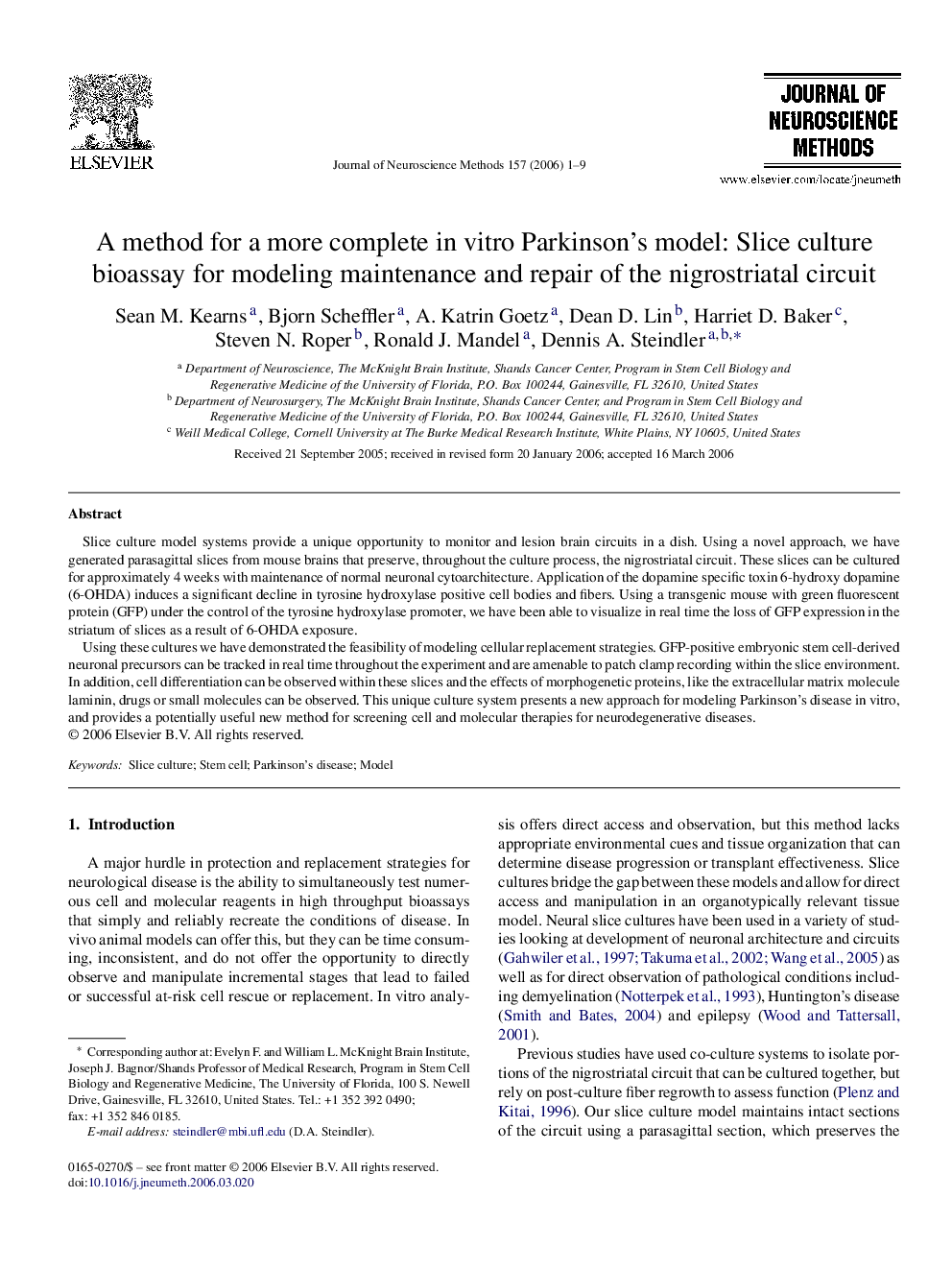| Article ID | Journal | Published Year | Pages | File Type |
|---|---|---|---|---|
| 4336962 | Journal of Neuroscience Methods | 2006 | 9 Pages |
Slice culture model systems provide a unique opportunity to monitor and lesion brain circuits in a dish. Using a novel approach, we have generated parasagittal slices from mouse brains that preserve, throughout the culture process, the nigrostriatal circuit. These slices can be cultured for approximately 4 weeks with maintenance of normal neuronal cytoarchitecture. Application of the dopamine specific toxin 6-hydroxy dopamine (6-OHDA) induces a significant decline in tyrosine hydroxylase positive cell bodies and fibers. Using a transgenic mouse with green fluorescent protein (GFP) under the control of the tyrosine hydroxylase promoter, we have been able to visualize in real time the loss of GFP expression in the striatum of slices as a result of 6-OHDA exposure.Using these cultures we have demonstrated the feasibility of modeling cellular replacement strategies. GFP-positive embryonic stem cell-derived neuronal precursors can be tracked in real time throughout the experiment and are amenable to patch clamp recording within the slice environment. In addition, cell differentiation can be observed within these slices and the effects of morphogenetic proteins, like the extracellular matrix molecule laminin, drugs or small molecules can be observed. This unique culture system presents a new approach for modeling Parkinson's disease in vitro, and provides a potentially useful new method for screening cell and molecular therapies for neurodegenerative diseases.
